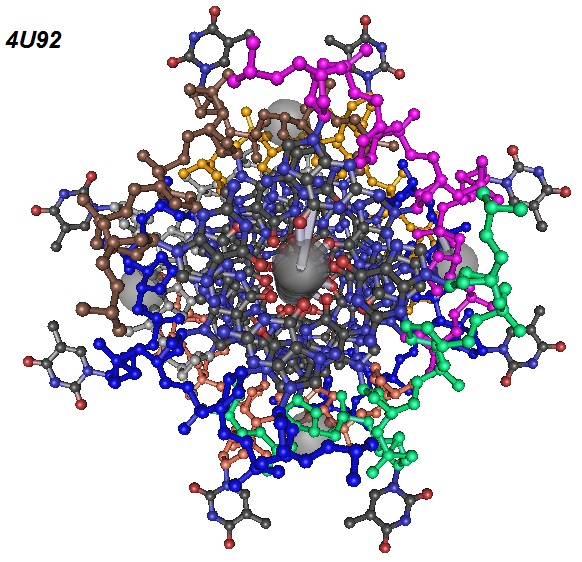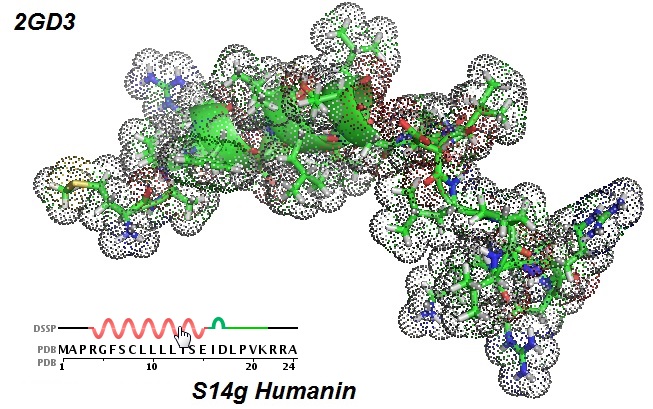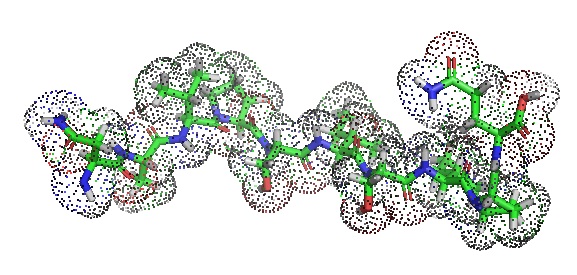|
|
|
Bio-Synthesis Newsletter - October 2016
|
Mass spectrometry can be used to analyze G-quadruplexes?
 Guanine-rich DNA and RNA sequences can form secondary structures called G-quadruplex structures. Analytical tools that allow characterization of these structures are electrophoresis, chromatography, mass spectrometry, NMR spectroscopy, X-ray crystallography, and a variety of other techniques. G-quadruplexes are formed at the 3’ end of telomeres. They have also been found in other sequence regions such as at the 5’ untranslated regions (UTRs) and the 3’ end of genes. Recently G-quadruplexes have emerged as therapeutic targets in oncology and for the design of novel anticancer drugs. Guanine-rich DNA and RNA sequences can form secondary structures called G-quadruplex structures. Analytical tools that allow characterization of these structures are electrophoresis, chromatography, mass spectrometry, NMR spectroscopy, X-ray crystallography, and a variety of other techniques. G-quadruplexes are formed at the 3’ end of telomeres. They have also been found in other sequence regions such as at the 5’ untranslated regions (UTRs) and the 3’ end of genes. Recently G-quadruplexes have emerged as therapeutic targets in oncology and for the design of novel anticancer drugs.
|
|
Read More
|
|
|
What is a G-quadruplex?
 A G-quadruplex is a secondary structure formed from G-rich sequences of DNA. These structures are now known to play important roles in the regulation of transcription and translation. Mass spectrometry has been used for the analysis of G-quadruplex structures. Electrospray-ionization mass spectrometry allows the study of interactions between small molecules and G-quadruplexes to screen for drug candidates. Synthetic G-quadruplex oligonucleotides are used to solve structures of G-quadruplexes via X-ray crystallography. A G-quadruplex is a secondary structure formed from G-rich sequences of DNA. These structures are now known to play important roles in the regulation of transcription and translation. Mass spectrometry has been used for the analysis of G-quadruplex structures. Electrospray-ionization mass spectrometry allows the study of interactions between small molecules and G-quadruplexes to screen for drug candidates. Synthetic G-quadruplex oligonucleotides are used to solve structures of G-quadruplexes via X-ray crystallography.
|
|
Read More
|
|
|
Can humanin prevented Alzheimer's disease?
 The peptide humanin selectively suppresses neuronal cell death caused by Alzheimer’s disease. Humanin was found to protect cells from oxidative stress, serum starvation, hypoxia, and other cell-damaging effects. A functional expression screening in 2001 identified the humanin gene as an open reading frame (ORF) found within the 16s rRNA gene. Humanin is a flexible peptide with a turn-like structure. Because of its neuro- and cell protecting properties humanin may be useful for the treatment and prevention of Alzheimer’s disease. The peptide humanin selectively suppresses neuronal cell death caused by Alzheimer’s disease. Humanin was found to protect cells from oxidative stress, serum starvation, hypoxia, and other cell-damaging effects. A functional expression screening in 2001 identified the humanin gene as an open reading frame (ORF) found within the 16s rRNA gene. Humanin is a flexible peptide with a turn-like structure. Because of its neuro- and cell protecting properties humanin may be useful for the treatment and prevention of Alzheimer’s disease.
|
|
Read More
|
|
|
Davunetide modulates Microtubules
 The peptide davunetide is thought to modulate the microtubule pool in neurons. The regulation of microtubule dynamics is important for the growing and developing nervous system. The peptide is also known as NAP, NAPVISIPQ peptide or AL-108 and is an active peptide fragment of the neurotrophic protein Activity-Dependent Neuroprotective Protein or ADNP. This protein is critical for the development of neurons. Davunetide therapy is used for the repair of cytoskeletal microtubule structures and the restoration of their function. Already trials in phase 1, 2 and 3 for this therapeutic drug have been performed. However, some negative results halted the trails. Only the future will tell if this peptide is a useful therapeutic drug for the treatment of neurodegenerative diseases. The peptide davunetide is thought to modulate the microtubule pool in neurons. The regulation of microtubule dynamics is important for the growing and developing nervous system. The peptide is also known as NAP, NAPVISIPQ peptide or AL-108 and is an active peptide fragment of the neurotrophic protein Activity-Dependent Neuroprotective Protein or ADNP. This protein is critical for the development of neurons. Davunetide therapy is used for the repair of cytoskeletal microtubule structures and the restoration of their function. Already trials in phase 1, 2 and 3 for this therapeutic drug have been performed. However, some negative results halted the trails. Only the future will tell if this peptide is a useful therapeutic drug for the treatment of neurodegenerative diseases.
|
|
Read More
|
|
|
Mesolithic foragers consumed plant foods
 The paleo diet assumes that early humans mainly ate meat, fish, and fruit but excluded dairy or grain products and processed food. However, researchers from the UK now found starch entrapped in the dental calculus of Mesolithic human teeth. The Mesolithic period is also called the middle stone age. This time period refers to the ancient cultural stage that existed between the paleolithic and the neolithic period. These findings indicate that early humans ate domesticated grains much earlier that what was originally assumed and that domesticated plants were introduced and eaten at least half a millennium earlier than previously thought. The paleo diet assumes that early humans mainly ate meat, fish, and fruit but excluded dairy or grain products and processed food. However, researchers from the UK now found starch entrapped in the dental calculus of Mesolithic human teeth. The Mesolithic period is also called the middle stone age. This time period refers to the ancient cultural stage that existed between the paleolithic and the neolithic period. These findings indicate that early humans ate domesticated grains much earlier that what was originally assumed and that domesticated plants were introduced and eaten at least half a millennium earlier than previously thought.
|
|
Read More
|
|
|
|
|
|
Bio-Synthesis, Inc.
800 Mario Court, Lewisville, TX 75057, USA
Toll Free: 800.227.0627 | 1.972.420.8505 (Intl.)
|
|
|
|
|
|